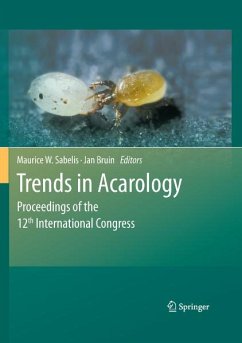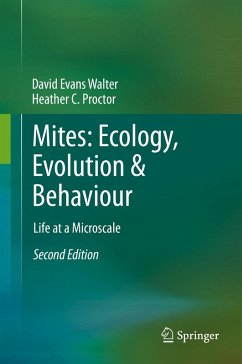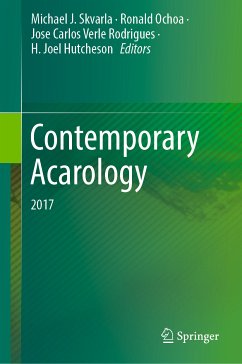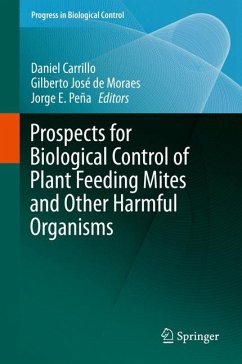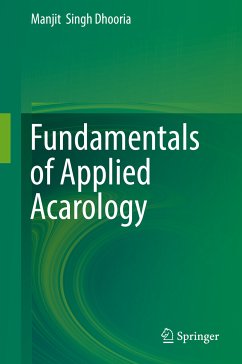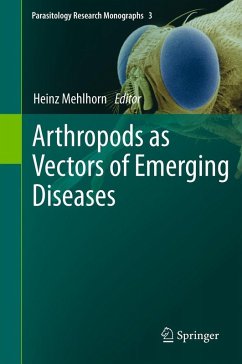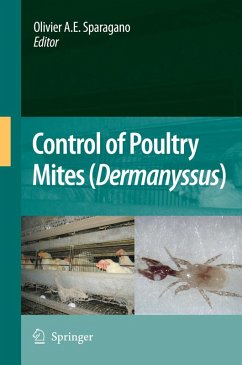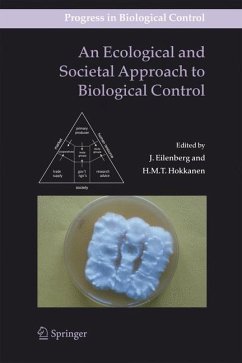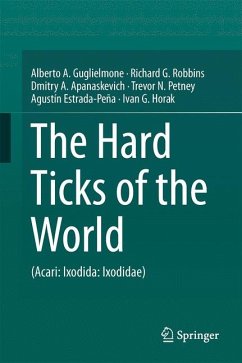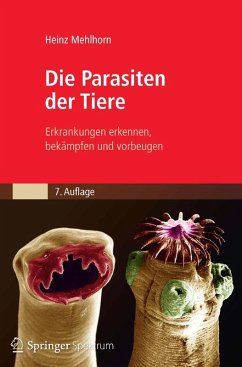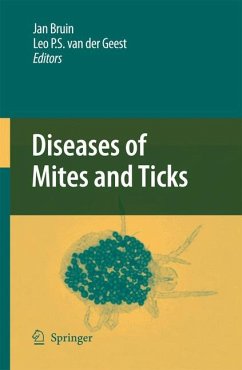
Diseases of Mites and Ticks (eBook, PDF)
Versandkostenfrei!
Sofort per Download lieferbar
112,95 €
inkl. MwSt.
Weitere Ausgaben:

PAYBACK Punkte
56 °P sammeln!
Ticks transmit a greater variety of pathogens than any other group of hemotophagous arthropods (Sonenshine 1993). In ticks, the midgut is the ?rst site of exposure to a wide variety of hemoparasites that may be ingested with the bloodmeal. Some of these he- parasites are either not infective for ticks and rapidly digested or cleared by the innate tick immune system. Others infect midgut epithelial cells where they multiply and subsequently infect other tissues including the salivary glands. Transmission may occur when the tick is ingested by the vertebrate host or from salivary glands via the ...
Ticks transmit a greater variety of pathogens than any other group of hemotophagous arthropods (Sonenshine 1993). In ticks, the midgut is the ?rst site of exposure to a wide variety of hemoparasites that may be ingested with the bloodmeal. Some of these he- parasites are either not infective for ticks and rapidly digested or cleared by the innate tick immune system. Others infect midgut epithelial cells where they multiply and subsequently infect other tissues including the salivary glands. Transmission may occur when the tick is ingested by the vertebrate host or from salivary glands via the saliva to vertebrate hosts when the tick feeds again. Tick-borne pathogens have apparently co-evolved with ticks for their mutual survival because, while pathogens undergo considerable multiplication in ticks, these infections do not appear to be detrimental to tick feeding or their biology (Kocan et al. 1992a, 2005; Sonenshine et al. 2005). Among the various tick-borne pathogens, those belonging to the genus Anaplasma (Rickettsiales: Anaplasmataceae) are obligate intracellular organisms found exclusively within parasitophorous vacuoles in the cytoplasm of both vertebrate and tick host cells (Kocan 1986; Dumler et al. 2001). The type species, A. marginale, causes the econo- cally important cattle disease, anaplasmosis, with Dermacentor variabilis comprising one of the main tick vectors of this pathogen in the USA (Kocan et al. 2004).
Dieser Download kann aus rechtlichen Gründen nur mit Rechnungsadresse in A, B, BG, CY, CZ, D, DK, EW, E, FIN, F, GR, HR, H, IRL, I, LT, L, LR, M, NL, PL, P, R, S, SLO, SK ausgeliefert werden.




